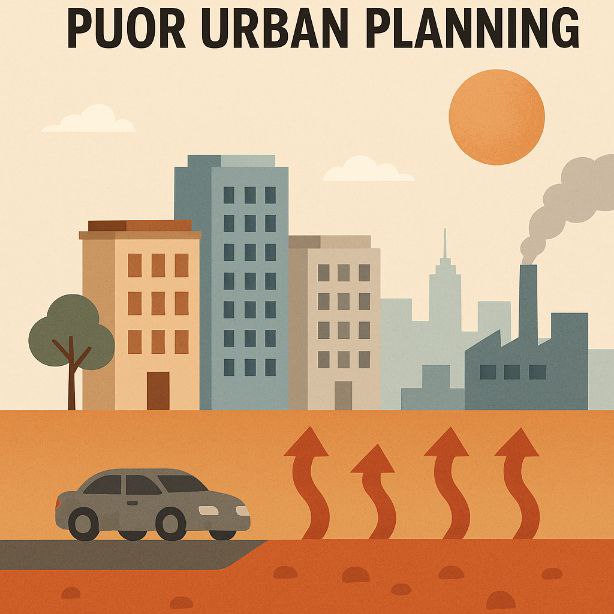When we talk about energy efficiency, our minds often go to smart thermostats, better insulation, or renewable energy sources.
But one critical and often overlooked factor is the role urban planning plays in shaping our energy consumption.
We live in cities designed more by aesthetics, economics, and history than by functional energy considerations.
As a result, a significant portion of our energy resources is wasted unnecessarily.
How Does Poor Urban Planning Drain Energy?
❌ Urban Heat Islands
Extensive concrete and asphalt surfaces absorb the sun’s heat during the day and release it at night. Lack of green spaces leads to higher temperatures in urban areas, which increases demand for cooling systems like air conditioners and HVAC units.
❌ Inefficient Building Placement
Buildings that ignore sunlight direction and natural wind flow tend to overheat in summer and lose heat in winter, resulting in increased energy use to maintain comfort.
❌ Poor Natural Ventilation
Designs that prevent natural air circulation force buildings to rely heavily on mechanical ventilation, raising energy consumption unnecessarily.
❌ Disconnected Infrastructure
Separating residential, commercial, and industrial areas without integrated planning complicates energy distribution and transportation, leading to higher energy costs.
Solutions:
✅ Smart Design and Optimization
Though redesigning entire cities overnight is impossible, there are effective measures that can make a big difference:
✅ Climate-Responsive Design
Incorporating local climate features like wind direction, sunlight, and humidity into neighborhood and street planning reduces reliance on artificial heating and cooling.
✅ Increasing Green Spaces
Parks, green roofs, and vegetated walls can lower urban temperatures and counteract heat island effects.
✅ Maximizing Natural Light and Ventilation
Smart use of daylight and designing spaces that encourage airflow significantly cuts electricity use.
✅ Using Data and Smart Tools
Monitoring temperature, energy consumption, and environmental conditions enables better decision-making at building and city scales.
Tempfort is a Bridging Awareness and Action
At Tempfort, we believe energy efficiency starts with awareness and continues with smart actions.
By monitoring temperature data and providing precise analyses, we help individuals and organizations optimize their energy use without compromising comfort.
We may not be able to redesign every city overnight, but we can start by asking:
Is our built environment helping—or hurting—our energy goals?
Because in the end, every single degree matters — for our energy bills, our planet, and future generations.








